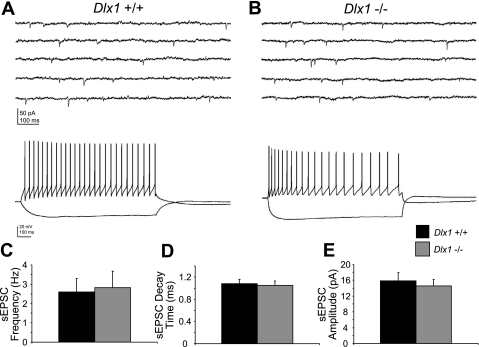Fig. 2.
Excitatory drive of interneurons is normal in P9–12 Dlx1−/− mice. A, top trace: representative voltage-clamp recording from a WT RSNP interneuron. Bottom trace: the same cell recorded in current-clamp mode, confirming its identity as a RSNP interneuron. B, top trace: representative sEPSC recording from a Dlx1−/− RSNP interneuron. Bottom trace: the same cell recorded in current-clamp mode. C: recordings of sEPSCs in P9–12 WT and Dlx1−/− interneurons show that mean sEPSC frequency is unchanged in young Dlx1 mutant mice. D: mean sEPSC decay time is also similar between WT and mutant mice. E: mean sEPSC amplitude is unchanged. Black bars, WT; gray bars, Dlx1−/−.

